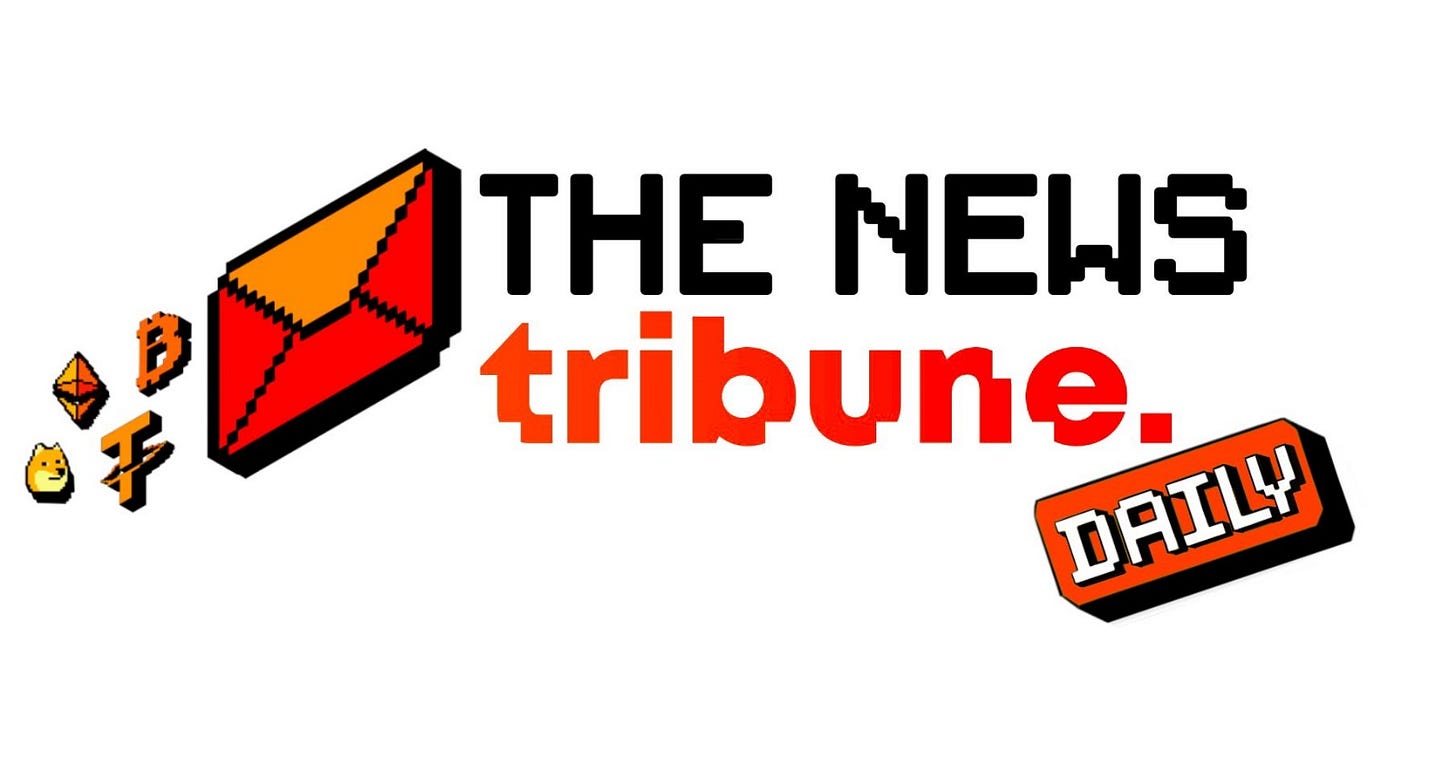🛡️ The G7 Tackles Crypto Hacks Orchestrated by Rogue States
Welcome to the Daily Tribune on Friday, May 09, 2025 ☕️
Hello Cointribe! 🚀
Today is Friday, May 09, 2025 and like every day from Tuesday to Saturday, we summarize for you the news from the last 24 hours that you shouldn’t miss!
But first…
✍️ Cartoon of the day:
A quick look at the market…
🌡️ Temperature:
Sunny ☀️
24h crypto recap! ⏱
🏛️ Arizona adopts a strategic Bitcoin reserve, following the example of New Hampshire
Arizona adopts legislation allowing the state to hold unclaimed digital assets in a strategic reserve, without investing public funds. This initiative follows New Hampshire's example, which allows investing up to 5% of public funds in major cryptocurrencies and precious metals.
💼 Coinbase acquires Deribit for 2.9 billion dollars
Coinbase announces the acquisition of Deribit, the world’s largest trading platform for Bitcoin and Ethereum options, for $2.9 billion. This transaction, the largest in the digital asset sector to date, strengthens Coinbase’s position in the crypto derivatives market.
🌐 The G7 wants to stop crypto hacks from rogue states like North Korea
The G7 is developing a global cybersecurity doctrine to counter crypto attacks orchestrated by rogue states, especially North Korea. This initiative aims to strengthen international cooperation to protect the integrity of the global financial system.
📝 Binance: CZ confirms he officially requested Trump’s pardon
Changpeng Zhao, founder of Binance, confirms he has officially requested presidential pardon from Donald Trump following his conviction for money laundering.
Crypto of the day: NEAR Protocol (NEAR).
NEAR Protocol is a Layer 1 blockchain designed to offer a scalable, secure, and developer-friendly infrastructure for decentralized applications (dApps). It stands out with its unique consensus mechanism called "Doomslug" and its "Nightshade" sharding technology, enabling fast transactions and reduced fees.
The native token NEAR is used to pay transaction fees, participate in protocol governance, and secure the network via staking. NEAR holders can delegate their tokens to validators to earn rewards and participate in decisions regarding protocol evolution.
Recent performance:
Current price: $2.86 USD
24-hour change: +17.52%
Market capitalization: approximately $3.46 billion
Ranking on CoinMarketCap: #32
99 million in 12 hours: the $MELANIA case reveals crypto market blind spots
The memecoin market has experienced another revealing episode of its structural flaws. Within a few hours, a small group of traders reportedly generated nearly $100 million in gains on the $MELANIA token, a highly speculative asset linked to Melania Trump’s public image. Beyond the spectacular figure, this operation highlights a recurring problem: information asymmetry in unregulated crypto markets, and aggressive short-term liquidity capture strategies.
A precise operation based on a strategic "pre-announcement"
24 wallets acquired a total of $2.6 million worth of $MELANIA tokens… just minutes before its public promotion by influential accounts on social networks. These targeted moves, executed in an extremely narrow window, suggest anticipation of the media event. Result: estimated cumulative profits of $99.6 million in less than 12 hours.
One of the analyzed wallets reportedly sold 86% of its tokens two hours after the purchase, with an immediate gain of $2.5 million. This type of operation, akin to sniping or pre-pump trading, raises questions similar to insider trading in traditional finance — but in an ecosystem without institutional safeguards.
A toxic market dominated by extractive dynamics
The $MELANIA token, launched on Solana, briefly reached $5.50 before plummeting 96% in the following days. This sharp drop fits a now familiar pattern: launch based on a celebrity or viral narrative, momentary hype, liquidity capture… then deflation. Unlike the $TRUMP memecoin, which remains more resilient, $MELANIA illustrates a structural trend: assets without fundamentals used as instruments for wealth transfer benefiting informed groups.
The $MELANIA case is not an isolated incident but a revealing symptom of systemic vulnerabilities in the memecoin market. It sharply illustrates the limits of self-regulation in decentralized environments, as well as the risks of implicit manipulation by structured groups operating in the blind spots of jurisdictions.
If regulators want to restore a minimal form of trust in these markets, responses are necessary: traceability of transactions upstream of launches, transparency on initial allocations, and regulation of public promotion mechanisms. Otherwise, memecoins will continue to be viewed not as an asset class, but as negative-sum games disguised as innovation.









